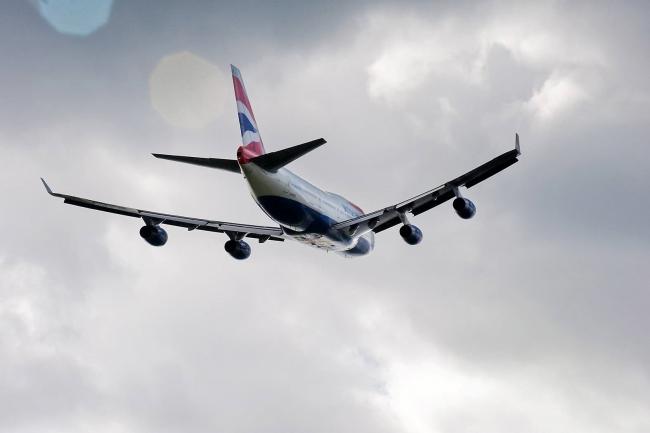Richmond criticises the 1.5 million DfT leaflets promoting 3rd runway as inadequate on noise problems
Lord True, the leader of Richmond Council, has complained (as have thousands of other people) that the information being put out in the DfT consultation on the Heathrow NPS is inadequate. He said: “The leaflet that was sent out last week it propaganda in its finest. And, the more we read into the full consultation material the more concerned we are at the Government’s selective presentation of the third runway’s impacts. They should be proactively informing flight path communities about major changes like the loss of daytime respite periods but that’s not been their approach. In the next few weeks there will be a number of resident consultation events, coordinated by the Department of Transport. I urge all concerned people to go and have their say and let the government know if they are not giving the information we need.” The DfT is not making it clear that areas like Richmond would be overflown for around 75% of the day, rather than around 50% of the time now. The leaflet makes no mention of noise, other than a carefully worded offer of 6.5 hours with no SCHEDULED flights at night. It is not made easy for members of the public to find data on noise changes, with a 3rd runway. There will be no details of flight paths for several years – so the whole NPS consultation is being done, deliberately by the DfT, in the absence of noise information needed by residents.
.
Tweet
Government accused of hiding facts in Heathrow third runway consultation booklet

Richmond Council has said it is concerned the negative impact of a third runway is not being communicated to residents
The Government has been accused of hiding the fact that respite time of flights over homes in the borough will be dramatically cut if a third Heathrow runway is built.
Examination of Heathrow expansion consultation documents shows communities under flight paths would be flown over for about 75% of the day if the airport is expanded. Currently planes fly over these areas about 50% of the time.
Richmond Council criticised the Department for Transport (DfT) for failing to mention this in its consultation leaflet, recently delivered to more than a million homes.
“In the next few weeks there will be a number of resident consultation events, coordinated by the Department of Transport. I urge all concerned people to go and have their say and let the government know if they are not giving the information we need.”
A spokesman for the DfT said the Government is considering a ban of six and a half hours on scheduled night flights, and repeated its commitment to providing a “world class” compensation for affected communities.
He said: “We are acutely aware of the impact that aircraft noise has on people living close to flightpaths.“(The compensation package) will include noise insulation for homes and schools and improvements to public facilities.”Richmond Council, along with Wandsworth, Hillingdon, Windsor and Maidenhead councils, are still examining the consultation material in detail.
.
What the draft NPS says
Other supporting documents from the DfT to the NPS consultation
One of these is the draft Sustainability Appraisal
That just looks at numbers within 57 dB noise contours, and the theoretical reductions over time as planes are expected to become very slightly less noisy.
Below is the comment by the AEF (Aviation Environment Federation) on what the government’s NPS says on noise:
What the National Policy Statement says about noise
The Government makes a big deal about its various proposed measures for noise mitigation. But aside from the fact that none will bring noise levels down to anywhere near the level recommended by the World Health Organisation, many are problematic and misleading.
Key measures include:
- A six and a half hour night flight ban for scheduled flights.
For those communities who have been suffering from night noise for decades and who have campaigned relentlessly for a night flight ban this will feel like a step forward. But 6 and a half hours is a long way short of the 8 recommended by WHO, and a proposed curfew for ‘scheduled’ flights doesn’t prevent late-running flights from being pushed into the night period, or from being scheduled in the late evening and early morning, times when some people find their sleep is most likely to be disrupted.
- The introduction of a “legally binding” noise envelope
While this may sound powerful, the detail of how it will work is left for Heathrow itself to work out, with the danger being that the airport only commits to noise limits that are easy to achieve. Defining limits in a way that actually benefits local communities, while adding 260,000 more aircraft to the local skies, will be a challenge. While the 57 Leq noise ‘footprint’ of the airport has, for example, been reducing over time as a result of the introduction of quieter aircraft, there is no evidence that there has been a commensurate fall in noise annoyance. In fact annoyance from aircraft noise at a national level has been increasing.
- The provision of predictable periods of respite from noise.
Providing more reliable respite periods had been cited by the Airports Commission, without much explanation, as a possible benefit to communities from expansion. But the Government specifies that predictability should be afforded only “to the extent that this is within the applicant’s control”, and noise respite will in fact be less on average with an expanded airport than is the case today.
http://www.aef.org.uk/2017/02/15/the-nps-for-heathrow-expansion-a-brief-tour/
.
See also
Critique of 11 claims by DfT, in its 1.5 million pro-Heathrow runway leaflets, for NPS consultation
The DfT has sent out 1.5 million leaflets to households in areas not too far from Heathrow. The leaflets make no attempt whatsoever of balance, and are merely advertising the runway plans and promoting them. Many of the claims are misleading, or so abbreviated as to be unclear. Below there is a critique of the claims, point by point, and links to evidence backing up the criticisms. If anyone has received a leaflet, and wonders about the facts, this webpage may give some useful information. Just a few examples of the dubious statements in the leaflet: the figure of £61 billion economic benefit is given, leaving out the proviso that this is over 60 years. There is much made of the generosity of the compensation to be given for compulsory purchase, but in reality anything much below 125% would be derisory, and way below world standards. The claim about six and a half hours of no scheduled night flights omits to mention how many flights, scheduled before 11pm, often take off almost to midnight. And though there may be 6 more domestic links from Heathrow, these are likely to be unprofitable and may not last for long. The loss of long haul routes from other UK airports, due to a larger Heathrow, is conveniently ignored.
